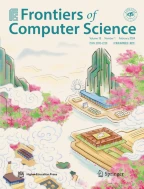Abstract
Almost all applications of Artificial Neural Networks (ANNs) depend mainly on their memory ability. The characteristics of typical ANN models are fixed connections, with evolved weights, globalized representations, and globalized optimizations, all based on a mathematical approach. This makes those models to be deficient in robustness, efficiency of learning, capacity, anti-jamming between training sets, and correlativity of samples, etc. In this paper, we attempt to address these problems by adopting the characteristics of biological neurons in morphology and signal processing. A hierarchical neural network was designed and realized to implement structure learning and representations based on connected structures. The basic characteristics of this model are localized and random connections, field limitations of neuron fan-in and fan-out, dynamic behavior of neurons, and samples represented through different sub-circuits of neurons specialized into different response patterns. At the end of this paper, some important aspects of error correction, capacity, learning efficiency, and soundness of structural representation are analyzed theoretically. This paper has demonstrated the feasibility and advantages of structure learning and representation. This model can serve as a fundamental element of cognitive systems such as perception and associative memory.
Similar content being viewed by others
References
Thompson R F. Neurobiology of learning and memory. Science, 1986, 233: 941–947
Carew T J. Molecular enhancement of memory formation. Neuron, 1996, 16: 5–8
Kandel E R, Schwartz J II, Jessell T M. Principles of neural science (4th edition). McGraw-Hill Companies, Inc., 2000, 175–316
Kandel E R. The molecular biology of memory storage: a dialogue between genes and synapses. Science, 2001, 294: 1030–1038
Sharkey N E. An Oral History of Neural Networks. Artificial Intelligence, 2000, 119: 287–293
Kimoto T, Okada M. Mixed state on a sparsely encoded associative memory model. Biological Cybernetics, 2001, 85: 319–325
Kimoto T, Okada M. Mixed states on neural network with structural learning. Neural Networks, 2004, 17: 103–112
Bohland J W, Minai A A. Efficient associative memory using small-world architecture. Neurocomputing, 2001, 38: 489–496
Ganguly N, Maji P, Sidkar B K, et al. Design and characterization of cellular automata based associative memory for pattern recognition. IEEE Transactions on Systems, Man, and Cybernetics, Part B, 2004, 34(1): 672–679
Ferster D, Spruston N. Cracking the neuronal code. Science, 1995, 270: 756–757
Yoshio S. How do cell assemblies encode information in the brain? Neuroscience and Biobehavioral Reviews, 1999, 23: 785–796
Quinlan P T. Structural change and development in real and artificial neural networks. Neural Networks, 1998, 11: 577–599
Tanaka K. Representation of visual features of objects in the interotemportal cortex. Neural Networks, 1996, 9(8): 1459–1475
Yao II S, Li C Y. Clustered organization of neurons with similar extra-receptive field properties in the primary visual cortex. Neuron, 2002, 35: 547–553
Sun C, Chen X, Huang L, et al. Orientation bias of the extraclassical receptive field of the relay cells in the cat’s dorsal lateral geniculate nucleus. Neuroscience, 2004, 125: 495–505
Bickhard H M, Terveen L. Foundational issues in artificial intelligence and cognitive science. Amsterdam, Elsevier publishing company, 1995, 11–18
Wermter S, Austin J, Willshaw D. Towards novel neuroscience-inspired computing. In: Stefan Wermter, Jim Austin, David Willshaw (Eds.), Emergent neural computational architectures based on neuroscience. Berlin: Springer, 2001, 1–19
Fuster J M. Cortical dynamics of memory. International Journal of Psychophysiology, 2000, 35: 155–164
Sandler U, Tsitolovsky L. Fuzzy dynamics of brain activity. Fuzzy Sets and Systems, 2001, 121: 237–245
Glassman R B. Hypothesized neural dynamics of working memory: Several chunks might be marked simultaneously by harmonic frequencies within an octave band of brain waves. Brain Research Bulletin, 1999, 50(2): 77–93
Cariani P. Symbols and dynamics in the brain. BioSystems, 2001, 60: 59–83
Rosser Rosemary A. Cognitive development: psychological and biological perspectives, Needham Heights Massachusetts: Simon & Schuster Inc., 1994, 285–289
Watts D, Strogatz S H. Collective dynamics of ’small-world’ networks. Nature, 1998, 393
Watts D. Small World: The Dynamics of Networks between Order and Randomness. Princeton Univ. Press, 1999.
Cassar A. Coordination and cooperation in local, random and small world networks: Experimental evidence. Games and Economic Behavior, 2007, 58: 209–230
Dekhtyarenko O K. Systematic rewiring in associative neural networks with small-world architecture. In: Proceedings of 2005. IJCNN’05. Vol.(2), 2005, 1178–1181.
Bohland J W, Minai A A. Efficient associative memory using small-world architecture. Neurocomputing, 2001, 38(40): 489–496
Bohland J W, Minai A A. Small-World model of associative memory. In: Proceedings of IJCNN 2000, Vol.(5), 2000, 597–601
Author information
Authors and Affiliations
Corresponding author
Rights and permissions
About this article
Cite this article
Wei, H. A hierarchical model for structure learning based on the physiological characteristics of neurons. Front. Comput. Sc. China 1, 361–372 (2007). https://doi.org/10.1007/s11704-007-0035-y
Received:
Accepted:
Issue Date:
DOI: https://doi.org/10.1007/s11704-007-0035-y

